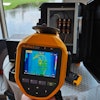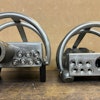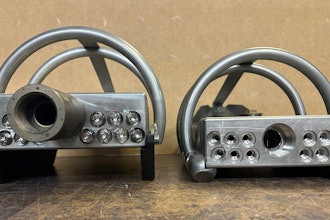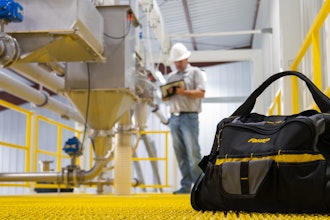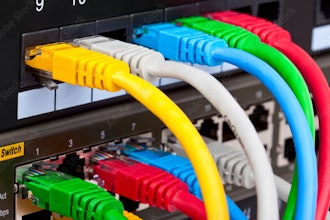Wise corrosion prevention strategies help industrial plants avoid unnecessary failure, maintenance and replacement costs in the long run. Many simple steps can be taken to protect basic plant components and assets, such as electrical boxes and equipment, metal and reinforced concrete structures and equipment or finished goods in storage or shipment. Using corrosion protection products that incorporate Vapor phase Corrosion Inhibitor (VpCI) technology offers unique advantages such as increased effectiveness, easier application and greater environmental and user friendliness to corrosion protection efforts.
Electrical Controls
Every plant has electrical control boxes, wire-ways, and electronics. With the increase in automation, the number of electrical controls and electronics in a plant has skyrocketed. Power boxes, switching equipment, communication systems, and remote electronics all play an important role in the functioning of a plant. In addition to the multiple electrical panels for basic plant electricity, each piece of automated machinery has its own control box. Control boxes can range in the hundreds to thousands depending on plant size. Corrosion in these areas can lead to outages, equipment failure, and cumulative repair costs. This is an area of corrosion protection that is easily overlooked but can be controlled by very simple preventive maintenance steps. The nominal cost of doing so far offsets the cost of service calls or replacement.
Corrosion prevention can be as basic as sticking a small cup (emitter) filled with VpCI powder inside a control cabinet. The powder inside an emitter vaporizes and disperses to fill the enclosed space until equilibrium is reached. VpCI molecules then adsorb on metal surfaces to form a protective monomolecular barrier that guards against the ingress of moisture, oxygen, and other corrosive substances. If one VpCI molecule becomes dislodged, other VpCI molecules in the enclosed atmosphere are attracted to the exposed metal surface to fill in the gap. Taking this simple step can save the many headaches that would arise with the start of a little corrosion on electrical connections and wires.
Another effective method of corrosion protection is the use of VpCI spray. This is a good choice for electrical and electronic components such as circuit boards and electrical contacts. The spray seals the environment and can be combined with a UV tracer to ensure that coating is complete. Some sprays can also protect components from fungus and dendrite growth.
Protecting Structural Metal and Reinforced Concrete
Corrosion inhibiting coatings can be used to protect structural metal from corrosion and are especially useful for tank protection. Coatings that contain nano-sized VpCIs have an added dimension of protection because they protect against micro-corrosion. Their small VpCI particles fill in the gaps that are left by traditional sacrificial corrosion inhibitors and provide a measure of protection against “creepage” corrosion (corrosion that spreads from a point of coating damage).
On areas where corrosion has already begun, it is recommended that a water-based passivating rust primer be applied. This type of primer is especially good for areas, such as tank interiors, where it is difficult to perform good surface preparation. Instead of struggling to remove rust that has already started, this type of primer penetrates the rust and turns it into a hydrophobic passive layer that can be top-coated with a water- or solvent-based coating. For submerged areas, combining this primer with a high solids moisture cure urethane is especially recommended.
Reinforced concrete surfaces such as floors, walls, pillars, and loading docks can benefit from the protection of migrating corrosion inhibitors. These can be combined with repair mortars, coatings, and sealers. When applied, migrating corrosion inhibitors travel through concrete pores to reach the metal surfaces of embedded rebar, where they are attracted and form a monomolecular barrier. This adsorbed layer protects rebar from corrosive elements such as air, moisture, and chlorides and can significantly extend the service life of a concrete structure. A good rule of thumb is to reseal and treat reinforced concrete structures every ten years.
Simple and Effective Packaging Strategies for Storage and Shipment
Ensuring that finished goods are protected from corrosion during shipment is critical to protecting a company’s bottom line and securing the customers’ confidence. A very simple way to do this is to use VpCI packaging — papers that are coated with VpCI, or films that have VpCI directly embedded. Many versatile packaging options are available, whether VpCI papers for wrapping and interleaving; VpCI linerboard and packing boxes; VpCI film for shrouding, shrink wrapping, and bagging; and VpCI bubble wrap for extra padding and static dissipation. VpCI packaging materials like these eliminate the time-consuming task of greasing and un-greasing finished goods to guard against corrosion. Many of the materials can be combined with additional protective qualities such as fire retardants or extra moisture and grease resistance. VpCI shrink wrap film works well for protecting backup plant equipment, or equipment temporarily offline. VpCI-impregnated foam pads can be inserted in lay-up packaging for additional protection.
Another advantage to using VpCI protection is that such products and methods are often more environmentally friendly than traditional corrosion inhibitors. VpCI technology is highly effective and often overrides the needs for dangerous chemicals such as nitrites to be included in the product makeup. VpCI methods typically cut down on the amount of materials needed, as well, and many VpCI products can be recycled or disposed without special permits.
Taking a look at these basic areas of corrosion prevention is an important step toward protecting your plant against the unnecessary corrosion costs and losses that come with everyday exposure to oxygen, moisture, or other contaminants. Using current corrosion protection technology that is easier to apply and remove is an excellent option of which to take advantage. A little corrosion prevention goes a long way toward extending plant service life and lowering costs. It is an excellent alternative to letting corrosion eat away plant assets.
Special thanks to Cliff Cracauer and Jessi Meyer of Cortec Corporation for their insights into corrosion protection of electrical controls and reinforced concrete, respectively.
Julie Holmquist is marketing content writer at Cortec Corporation, a provider of innovative, environmentally responsible VpCI and MCI corrosion control technologies. To learn more, visit www.cortecvci.com.

